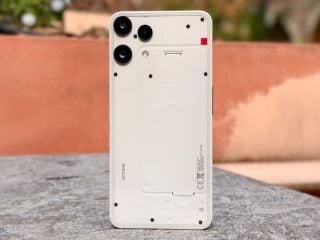- Home
- Internet
- Internet News
- US Researchers Show Computers Can Be Hijacked to Send Data as Sound Waves
US Researchers Show Computers Can Be Hijacked to Send Data as Sound Waves

The attack program takes control of the physical prongs on general-purpose input/output circuits and vibrates them at a frequency of the researchers' choosing, which can be audible or not. The vibrations can be picked up with an AM radio antenna a short distance away.
For decades, spy agencies and researchers have sought arcane ways of extracting information from keyboards and the like, successfully capturing light, heat and other emanations that allow the receivers to reconstruct content.
The new makeshift transmitting antenna, dubbed "Funtenna" by lead researcher Ang Cui of Red Balloon Security, adds another potential channel that likewise be would be hard to detect because no traffic logs would catch data leaving the premises.
Cui showed the system in action for a few reporters ahead of his talk Wednesday at the annual security conference Black Hat in Las Vegas. He said he would release "proof-of-concept" code after the talk, allowing other researchers and potentially malicious hackers to build on his work.
Hackers would need an antenna close to the targeted building to pick up the sound waves, Cui said, and they would need to find some way to get inside a targeted machine and convert the desired data to the format for transmission.
But the tool's development over the past two years is another illustration that a broadening array of devices can be manipulated in unpredictable ways and that attackers increase their advantage over defenders as gadgets grow more complex.
© Thomson Reuters 2015
Get your daily dose of tech news, reviews, and insights, in under 80 characters on Gadgets 360 Turbo. Connect with fellow tech lovers on our Forum. Follow us on X, Facebook, WhatsApp, Threads and Google News for instant updates. Catch all the action on our YouTube channel.
Related Stories
- Samsung Galaxy Unpacked 2025
- ChatGPT
- Redmi Note 14 Pro+
- iPhone 16
- Apple Vision Pro
- Oneplus 12
- OnePlus Nord CE 3 Lite 5G
- iPhone 13
- Xiaomi 14 Pro
- Oppo Find N3
- Tecno Spark Go (2023)
- Realme V30
- Best Phones Under 25000
- Samsung Galaxy S24 Series
- Cryptocurrency
- iQoo 12
- Samsung Galaxy S24 Ultra
- Giottus
- Samsung Galaxy Z Flip 5
- Apple 'Scary Fast'
- Housefull 5
- GoPro Hero 12 Black Review
- Invincible Season 2
- JioGlass
- HD Ready TV
- Laptop Under 50000
- Smartwatch Under 10000
- Latest Mobile Phones
- Compare Phones
- Realme P4x 5G
- OnePlus Ace 6T
- OPPO A6x 5G
- Samsung Galaxy Z TriFold
- Poco F8 Ultra
- Poco F8 Pro
- Huawei Mate 80 RS Master Edition
- Huawei Mate 80 Pro Max
- Asus ProArt P16
- MacBook Pro 14-inch (M5, 2025)
- Poco Pad M1
- Poco Pad X1
- Just Corseca Skywatch Pro
- Honor Watch X5
- Acerpure Nitro Z Series 100-inch QLED TV
- Samsung 43 Inch LED Ultra HD (4K) Smart TV (UA43UE81AFULXL)
- Asus ROG Ally
- Nintendo Switch Lite
- Haier 1.6 Ton 5 Star Inverter Split AC (HSU19G-MZAID5BN-INV)
- Haier 1.6 Ton 5 Star Inverter Split AC (HSU19G-MZAIM5BN-INV)

















